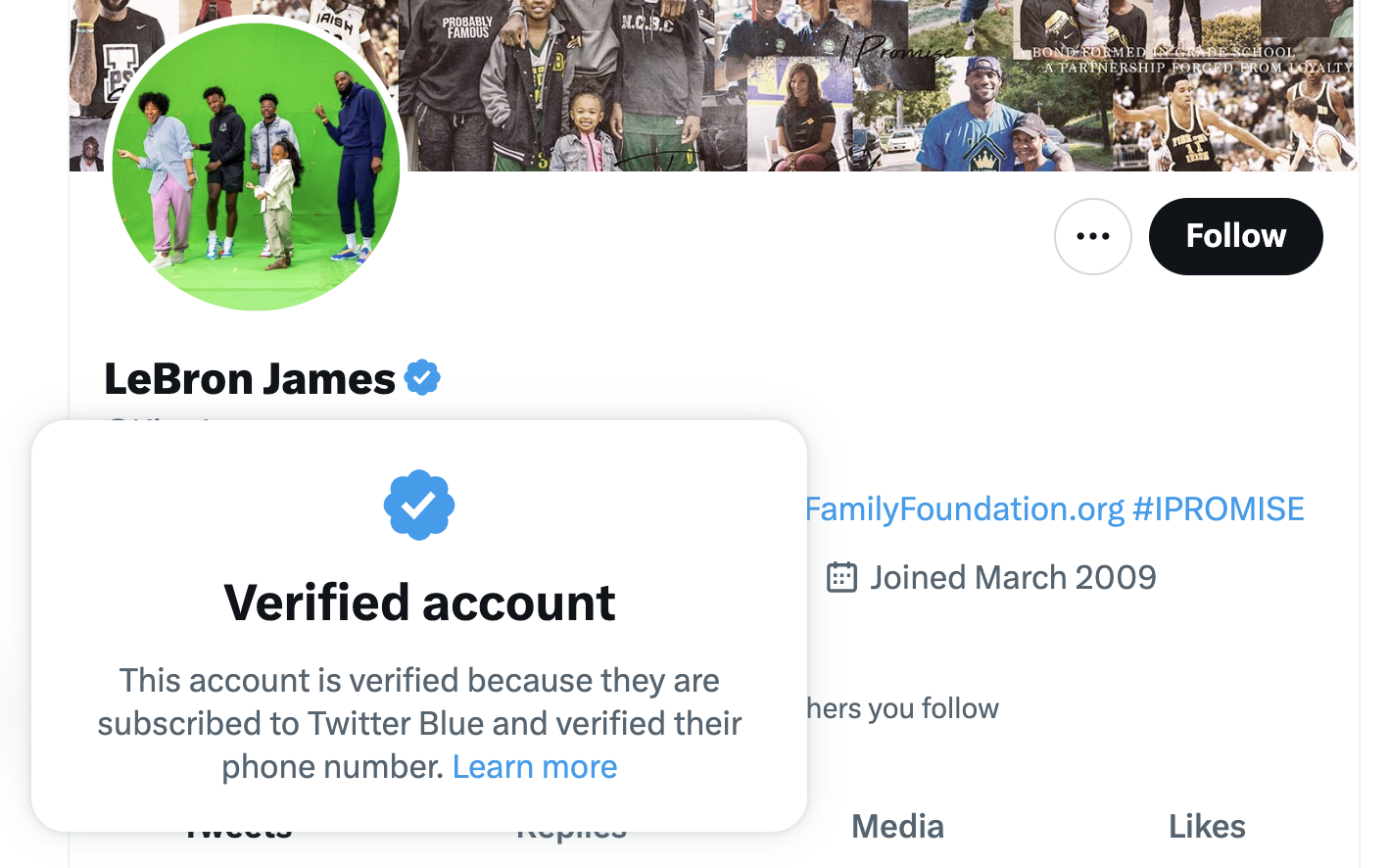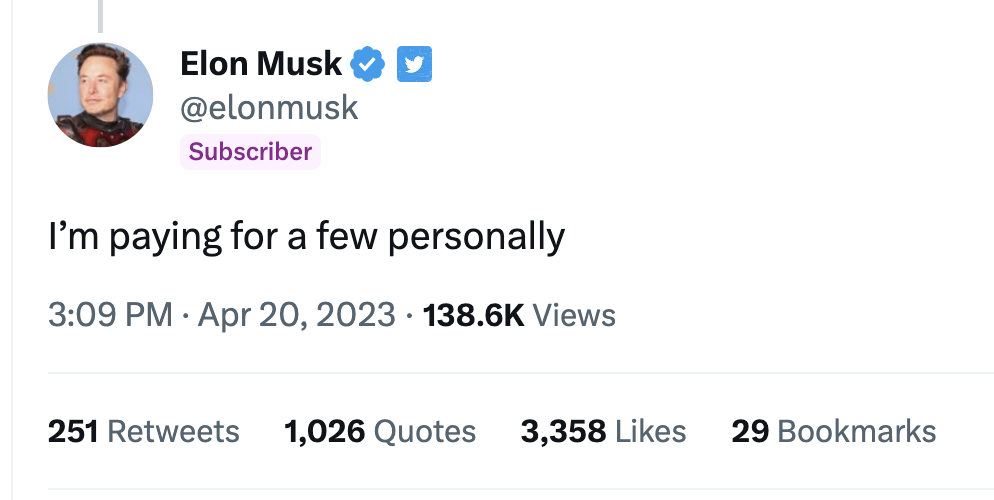The blue checkmarks that once christened an echelon of elite Twitter users as trustworthy — or at least probably themselves — are no more. It’s only been a few hours since the so-called legacy blue checks flickered and eventually disappeared, but chaos already reigns.
Prior to the great unchecking, Twitter check havers and have-nots were already taking sides about what the new blue checks would mean and what kind of person would be willing to pay for them. But now that they’re gone it’s all more confusing than we’d even anticipated.
Last month, LeBron James famously declared that he wouldn’t be paying for Twitter’s premium service in spite of his prominence there and his audience of more than 50 million followers. But a few hours after blue checks vanished en masse, James’ check conspicuously remained. Author Stephen King, who previously tangled with Musk on the issue, also retained his blue check and quickly took to Twitter to clarify that he hasn’t swayed from his decision not to pay.
So what’s going on? The Verge confirmed that Twitter intervened to spare James from the great unchecking, extending a complimentary account upgrade, whether James wanted it or not apparently. King appears to have gotten the same treatment.
To make the situation even more confusing — and even less flattering to Twitter — blue checks that the company has granted for free misrepresent those users as paying customers.

Musk confirmed his role in the mystery blue checks on Thursday afternoon, noting that he was “paying for a few personally.” (Odd wording considering that the blue checks are an incorporeal feature toggled on or off and not say, a sandwich on the house.)

While James and King, two celebrities who had previously criticized Twitter, get to hang onto their blue checks, not everyone is getting the royal treatment. The pope himself got downgraded along with Beyoncé, Kim Kardashian and Oprah. Rihanna and Taylor Swift both managed to hang onto their blue checks, but it’s not immediately clear if they’re paying or simply other recipients of Musk’s comped blue badges.
 Musk’s erratic interventions aside, the blue check now signals something very different on Twitter. For the first time in its history, the small blue badge means only that an account has paid for the company’s monthly subscription service, devised by Musk himself. Musk’s detractors are obviously not keen to pay for the blue check on a monthly basis, but his frenzied fans leapt at the chance when he opened up the paid feature.
Musk’s erratic interventions aside, the blue check now signals something very different on Twitter. For the first time in its history, the small blue badge means only that an account has paid for the company’s monthly subscription service, devised by Musk himself. Musk’s detractors are obviously not keen to pay for the blue check on a monthly basis, but his frenzied fans leapt at the chance when he opened up the paid feature.
Musk’s potential missteps here are obvious. By stripping blue checks from everybody (or just about everybody), the value of having the blue check at all has cratered. For regular users, the badges may now serve as an inverted sign of an account’s integrity — the mark of crypto scams and Musk acolytes rather than journalists and top celebrities. On a practical level, it’s already much more difficult to parse what information on the platform is relevant or useful than it was even just a couple of hours ago.
It’s been (checks watch) like three hours, and navigating Twitter somehow already entails wading into a disorienting miasma of impersonators, legitimate yet checkless accounts, desperate Elon adherents grasping for deliverance and famous users misleadingly portrayed as proud new paid subscribers. People who used to head to Twitter for news, celebrity updates or even customer service might want to look elsewhere for the time being, or perhaps forever.
It’s only appropriate that we bookend today’s Twitter chaos with some wise words from a guy who is probably Ice-T (difficult to say for sure).
Chaos reigns after Twitter’s blue checks vanish by Taylor Hatmaker originally published on TechCrunch
source https://techcrunch.com/2023/04/20/chaos-reigns-after-twitters-blue-checks-vanish/
Comments
Post a Comment